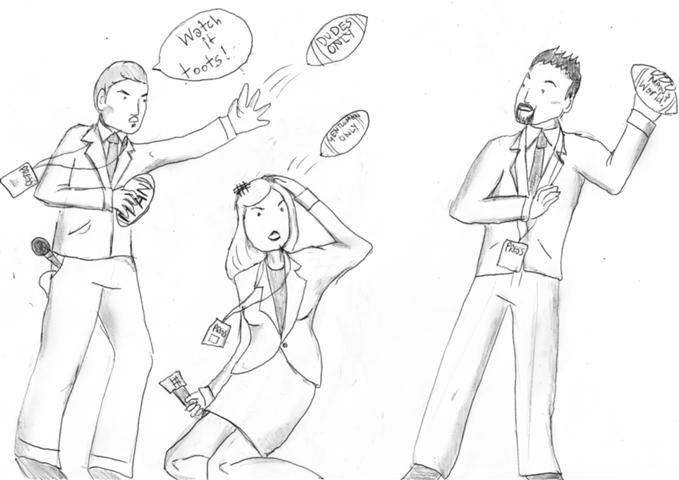While the public debate around Bill 18 has subsided since it was passed in the Manitoba legislature on Sept. 13, 2013, Catherine Taylor believes that this bill is only the first step in changing school climates and preventing homophobic bullying.
“Legislation is important because it restrains harassers and encourages [LGBTTQ*] inclusion in educators who were already inclined but feared backlash in the absence of legislative authorization. However, there is only so much that legislation can do.”
Taylor is an associate professor at the University of Winnipeg, and much of her research focuses on improving school climate for “sexual and gender minority students: lesbian, gay, bisexual, transgender, Two Spirit, queer, and questioning – and students with sexual and gender minority parents.”
On Nov. 16 she will be giving a talk entitled “Bill 18 and the case for LGBTQ inclusive schools,” where she will discuss the historical background of homophobic bullying in schools, and the potential effects that a culture of inclusion can have on reducing bullying and increasing students’ sense of safety in schools.
“Many students commented [ . . . ] on the hypocrisy of schools that claim to celebrate diversity and promote pride in the Charter of Rights yet do little to address the bullying and exclusion of [LGBTTQ*] students,” says Taylor.
Taylor believes that it is important to take a different approach to LGBTTQ* bullying, and to point out the specific differences between homophobic harassment and other forms of bullying.
“The short answer is that generic approaches flat-out don’t work for [LGBTTQ*] bullying. Unless school officials make a clear statement that [LGBTTQ*] students are welcome, students don’t assume their teachers are supportive, and they are very unlikely to report when they’re homophobically bullied. Permitting GSAs [Gay Straight Alliance clubs] is a simple, clear way of making support for [LGBTTQ*] students explicit.”
As a result of the First National Climate Survey on Homophobia and Transphobia in Canadian high schools, which was led by Taylor and Dr. Tracey Peter, Taylor has seen some improvements in school climates, which should hopefully improve post-Bill-18.
“[The good news is] homophobia is widespread but it’s not always deep,” says Taylor. “In schools where even small efforts have been made, [LGBTTQ*] students report a better school climate and feel more attached to their schools. GSAs make a significant difference, and that’s why they’re leaned on so heavily in [LGBTTQ*]-inclusive schools efforts. So do [LGBTTQ*]-specific harassment policies and curricular inclusion.”
Much of the backlash against Bill 18 was focused on the stipulations around GSAs, and this was seen by some as a threat to their freedom of religion. Taylor argues that while GSAs will need to be accommodated, the Bill doesn’t prevent anyone from holding, and even expressing, their own beliefs: “staff and students are still free to believe that [LGBTTQ*] people are sick and that our relationships are sinful, and probably free to say so.”
Taylor promises to contextualize Canada’s history of exclusion based on sexual orientation in order to further demonstrate why [LGBTTQ*] bullying differs from other forms of bullying, and to put the backlash against Bill 18 in perspective.
“Other social markers such as body size and nerdiness are common grounds for bullying, but they have not been grounds for incarceration, institutionalization, excommunication, execution, electroconvulsive therapy, castration, defrocking, disowning, eviction, shunning, and dismissal from employment.”
While this list may sound extreme, consider that it was only in 1996 that the Canadian Human Rights Act prohibited discrimination on the grounds of sexual orientation, and before 1969, same-sex relationships were criminal.
Though legislation changes, some attitudes persist, and Taylor hopes that her work can help to change this, and to help more students feel a sense of safety in their schools.
“We need to focus on making schools safe and respectful for [LGBTTQ*] students in particular because major institutions of Canadian society, ranging from psychiatry to law to religion to education, have historically made homophobia and transphobia socially acceptable, which tells [LGBTTQ*] students that they are objects of contempt, tells other students that they can abuse [LGBTTQ*] peers with impunity, and tells educators not to work on this problem for fear of backlash.”
“It will be years yet before Canadian society recovers from the legacy of that history, but the process needs to start now if we honestly want [LGBTTQ*] students to believe us when we say ‘everyone is welcome in this school.’”
Hear more from Catherine Taylor at her public talk on Nov. 16, “Bill 18 and the case for LGBTQ inclusive schools,” which will be held at 2 p.m. in the Anhang Room at the Millennium Library.





When did coersion become the best way to change the mind of the general public?
Its not a problem with the LGBTTQ I have but the way they seek power under the guise of equality. There has never been legislation against bullying that forced people to have a nerd/body size alliance. Bullying starts at home and parents need to wake up and teach their kids.
I’m pro GSA, but not in favor of coercive legislation telling me what to do. Did not the public schools act already give schools the power to deal with bullying?